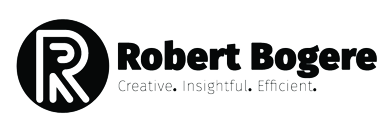Last Updated on Wed-Apr-2024 by Robert Bogere
Imagine you’re walking into a crowded room full of different individuals vying for your attention.
Amidst this digital noise, your brand stands out not just because of its logo or color scheme, but because of the personality it showcases.
Where your products and services abound, one thing to make your brand different from others is your personality.
Think of meeting a new person, encountering a brand can evoke feelings, impressions, and even a sense of connection.
I welcome you to the world of brand personalities—where your business strives to embody human-like characteristics and traits to resonate with your potential audience on a deeper level.
In this article, you’ll learn what is brand personality, Jennifer Aaker’s brand personality framework, how personality manifests in branding, and a step-by-step guide to how you can identify your brand personality.
Let’s go, buddy!
- What is brand personality?
- The Jennifer Aaker’s brand personality framework
- How personality manifests in branding
- Here’s a step-by-step guide to help you identify your brand personality
- Step 1: Understand your target audience
- Step 2: Analyze your brand values and mission
- Step 3: Review your brand history and heritage
- Step 4: Identify key personality traits
- Step 5: Conduct your stakeholder interviews
- Step 6: Evaluate your competitor’s brand personalities
- Step 7: Develop a brand personality statement
- Step 8: Test and refine
- Brand personalities conclusion
What is brand personality?
According to the Adobe Express article, brand personality is a recognizable set of characteristics and traits that your brand conveys to its customers.
It’s what makes a brand relatable and memorable to its customer base. It is how your company expresses itself through its tone of voice, core values, beliefs, and visual identity.
According to Evan Tarver, he defined brand personality as a set of human characteristics that are attributed to a brand name.

As you’re a human being, you have your characteristics and traits. You’re unique among others.
When you want to identify your brand personality, you’ve to think of your brand as a human being.
That way, you’ve to identify its characteristics and traits and attach them to your company.
Whatever you do, you’ve to showcase those traits to attract your potential customers.
Brand personality goes beyond aesthetics; it’s about the traits and values your brand represents.
Whether it’s the safety of Volvo, the innovation of Apple, or the togetherness of Coca-Cola, these traits shape how consumers perceive and interact with brands.
Discover: How you can create your brand mission statement
The Jennifer Aaker’s brand personality framework
This is one of the widely used frameworks for defining brand personality.
To understand brand personalities, psychologist Jennifer Aaker developed a framework identifying five core dimensions as below;
- Sincerity
- Excitement
- Competence
- Sophistication
- Ruggedness
Each dimension has a cluster of traits consumers associate with brands.
For instance, sincerity encompasses traits like being down-to-earth, honest, and cheerful, while ruggedness evokes toughness, outdoorsy, and rebelliousness.
Review the above;
1. Sincerity
This dimension has traits such as down-to-earth, honest, wholesome, and cheerful.
If your brand has a sincere personality is a genuine, caring, and trustworthy brand. Examples include Dove, Coca-Cola, and Amazon.

2. Excitement
Brands with an exciting personality are dynamic, youthful, and spirited.
They exude energy, innovation, and a sense of adventure. Examples include Red Bull, Nike, and GoPro.

3. Competence
This dimension reflects traits such as reliability, intelligence, success, and capability.
If your brand has a competent personality then it’s knowledgeable, dependable, and efficient. Examples include IBM, Microsoft, and Google.

4. Sophistication
Brands with a sophisticated personality are elegant, stylish, and refined.
They evoke a sense of luxury, taste, and exclusivity. Examples include Chanel, Rolex, and Mercedes-Benz.

5. Ruggedness
This dimension encompasses traits such as tough, outdoorsy, and rugged.
Brands with a rugged personality are associated with durability, strength, and resilience. Examples include Jeep, The North Face, and Harley-Davidson.

Jennifer Aaker’s framework offers an ultimate guide to defining brand personality, allowing your business to identify and articulate your specific traits that best align with your brand identity and target audience.
By using this framework, your brand can develop a clear personality that resonates with consumers, differentiates itself from competitors, and guides your branding effectively.
How personality manifests in branding
From your logo and slogan to any campaign and customer interactions, brand personality showcases every aspect of a company’s identity.
Take Nike, for instance; their – Just Do It mantra has excitement and empowerment, inspiring its consumers to push their limits.
Same with the luxury brand, Chanel exudes sophistication and elegance through its minimalist aesthetic and timeless appeal.

Tone of Voice and language
I) Conversation style
The way your brand communicates through its written and spoken language reflects its personality.
A good example is when your brand targets millennials, you can use casual and colloquial language, while if you’re a luxury brand, you can adopt a more formal and refined tone.
II) Humor and wit
Brands often inject humor and wit into their messaging to convey personality traits such as friendliness, playfulness, or irreverence.
Brands like Wendy’s and Moon Pie have gained attention for their witty social media interactions.

Visual identity
I) Logo design
The design elements of your logo, such as color, shape, and typography, can evoke specific personality traits.
For example, bold and vibrant colors may signify excitement, while sleek and minimalist designs may suggest sophistication.
II) Brand imagery
The images and visuals associated with your brand, whether in advertising campaigns, product packaging, or website design, play an important role in conveying your brand personality.
For example, outdoor apparel brands often use adventurous imagery to evoke a sense of ruggedness and exploration.
Brand storytelling
I) Narrative and mythos
You can craft narratives and mythologies around your brand origins, values, and mission to connect with consumers on an emotional level.

By having stories that resonate with your potential customers, your brand can reinforce its personality traits and build deeper relationships.
Discover: How you can tell your brand story using case studies
II) User-generated content
Encouraging your consumers to share their own stories and experiences with your brand can further reinforce your brand personality.
User-generated content not only humanizes your brand but also fosters a sense of community and belonging among your consumers.
Product design and packaging
I) Form and function
The design of your products and packaging can reflect your brand personality traits of a brand.
For instance, sleek and minimalist product designs may align with brand sophistication, while durable and practical designs may convey ruggedness.
II) Brand symbols and icons
Incorporating brand symbols and icons into product design and packaging can reinforce brand personalities and create memorable associations.
Think of iconic brand symbols like the Nike swoosh or the Apple logo, which instantly evoke their respective brand personalities.
Customer Experience
I) In-store environment
The atmosphere and ambiance of physical retail spaces can reflect a brand’s personality.
From the layout and decor to the music and scent, every aspect of the in-store experience contributes to shaping consumer perceptions.
II) Customer service interactions
How your brand interacts with its customers, whether in-person, over the phone, or online, can leave a lasting impression.

Friendly customer service representatives can reinforce positive personality traits, while rude or indifferent service can undermine them.
By carefully considering and integrating these elements into your branding efforts, your company can effectively bring its brand personality to life and create meaningful connections with your potential customers.
Here’s a step-by-step guide to help you identify your brand personality
Step 1: Understand your target audience
Before defining your brand personality, it’s important to understand who your target audience is.
Carry out your market research to get insights into your customer demographics, psychographics, and preferences.
Find their values, aspirations, and lifestyle choices resonating with your brand.
Step 2: Analyze your brand values and mission
Think about the fundamental beliefs and purpose of your brand.
- What does your brand stand for?
- What are your long-term goals and aspirations?
Your brand personality should align with these core principles and serve as a natural extension of your brand identity.
Step 3: Review your brand history and heritage
Examine your brand history, heritage, and origins.
- How has your brand developed?
- And, what are the key milestones shaping its identity?
Look for recurring themes, symbols, or narratives that inform your brand personality and resonate with your customers.
Step 4: Identify key personality traits
Refer to Jennifer Aaker’s brand personality framework or other similar models to identify the key brand personality traits that best represent your brand.
Consider dimensions such as sincerity, excitement, competence, sophistication, and ruggedness.
Reflect on the traits that align most closely with your brand values, mission, and target audience.
Step 5: Conduct your stakeholder interviews
Engage with your key stakeholders. Think of employees, customers, and brand ambassadors to gather different perspectives on your brand personality.
Interview or surveys to know how different stakeholders perceive your brand and which personality traits they associate with it.
Look for common themes and insights emerging from your conversations.
Step 6: Evaluate your competitor’s brand personalities
Analyze the brand personalities of your competitors to identify gaps and opportunities to make your brand different.
Compare and contrast their brand personality traits with yours, and consider how you can carve out a unique positioning in your marketplace.
Look for areas where your brand can stand out and offer something distinct to your target audience.
Step 7: Develop a brand personality statement
Based on your research and analysis, craft a concise brand personality statement that contains the essence of your brand.
Your crafted statement should articulate the key personality traits that define your brand and guide your branding efforts.
Keep it clear, memorable, and aligned with your brand values and mission.
Discover: How you can create your brand positioning statement
Step 8: Test and refine
Test your brand personality statement with internal and external stakeholders to gather feedback and insights.
Evaluate how well it resonates with your target audience and whether it effectively communicates your brand identity.
Iterate and refine as needed to ensure your brand personality reflects who you are as a brand.
Following these steps, you can systematically identify and define your brand personality, laying the foundation for building strong connections with your customers and differentiating yourself in the marketplace.
You can read more about this Visme step-by-step blueprint though quite different from the above.
Brand personalities conclusion
As you look at the future, the role of brand personality in shaping consumer behavior will only continue to grow.
With the rise of social media marketing, your brand can engage with its consumers on a personal level.
However, this also brings new challenges, such as maintaining authenticity in the presence of algorithmic content.
Ultimately, if your brand can authentically embody its personality traits while staying attuned to consumer needs will emerge as a leader in its industry.
In conclusion, brand personality is more than just a common buzzword. Instead, it’s the soul of your brand—the essence capturing the hearts and minds of your consumers.
By understanding the dimensions of brand personalities, embracing authenticity, and fostering emotional connections, your brand can forge deeper relationships with its potential customers and stand the test of time in the competitive space of nowadays.
So the next time you encounter any brand, take a moment to consider its personality—you might just find your new friend in the world of commerce.
Are you ready to unlock your brand personality?
Take your first step towards creating a brand that truly resonates with your audience by defining your personality.
Start by conducting a thorough assessment of your brand values, mission, and audience preferences.
Then, use your insights to craft a distinct and authentic brand personality that makes you different. Don’t let your brand blend into the background.
Stand out, connect deeply with your audience, and build lasting relationships that drive your growth and success.
Get started on your brand personality journey today. Click the above button to embark on your journey and unlock the true power of your brand.




